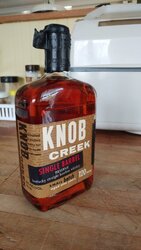Ashful
Minister of Fire
Technically, no. But indirectly, yes. Radiant heating only transfers energy to objects in the direct line of sight to the stove. But those objects, in turn, re-radiate to others. The difference is that while a 600F stove can radiate enormous amounts of energy unto a 70F object in the room, raising it's temperature quite a bit, each successive re-radiation transfer is happening at much lower temperature deltas (eg. the initial object heated to 85F now trying to radiant unto the next 70F object.I'm starting to get this a bit, but still having a bit of a hard time wrapping my head around it. If the heater is more radiant, it can still heat objects that aren't in a direct path of the stove, correct?
Your room air also picks up a lot of heat from the stove (and all of those objects), via direct conduction. It is this warm air that is generally required to move heat to the upper floors, although direct ceiling/floor conduction helps, too.
The convective stove just short-cuts the process, putting 100F+ air right into the room, where it's quickly swept off to adjacent rooms and up the staircase to do it's job.
In my case, the convective vs. radiant thing became a big deal, but that was unique to my installation. My stoves are installed in large fireplaces (see avatar), which are on external walls. The majority of heat radiated into that stone work is just conducted thru then re-radiated outside. Going to a convective stove with a "cold" jacket around it dramatically cut down on this radiation (and thus my losses), keeping more of the heat in the house. Another on of those old house / unique situations.
BTW, "heat" is a unit of energy, not power.
Last edited:




 ) and I'm thinking a lot about temperature and comfort. It's been pretty consistently 81 degrees here, which to us feels very comfortable in the shade, but in the direct sun it's way too hot. I read that direct solar radiation can raise the temp 10 to 15 degrees, so I'm presuming that this 81 air temp goes up to between 91 and 96 when in the sun. Would a wood stove have this same or a similar effect? For example, might the room temp be 81 but if you're within a certain distance directly in front of the stove, might that be 91 to 96?
) and I'm thinking a lot about temperature and comfort. It's been pretty consistently 81 degrees here, which to us feels very comfortable in the shade, but in the direct sun it's way too hot. I read that direct solar radiation can raise the temp 10 to 15 degrees, so I'm presuming that this 81 air temp goes up to between 91 and 96 when in the sun. Would a wood stove have this same or a similar effect? For example, might the room temp be 81 but if you're within a certain distance directly in front of the stove, might that be 91 to 96? 
